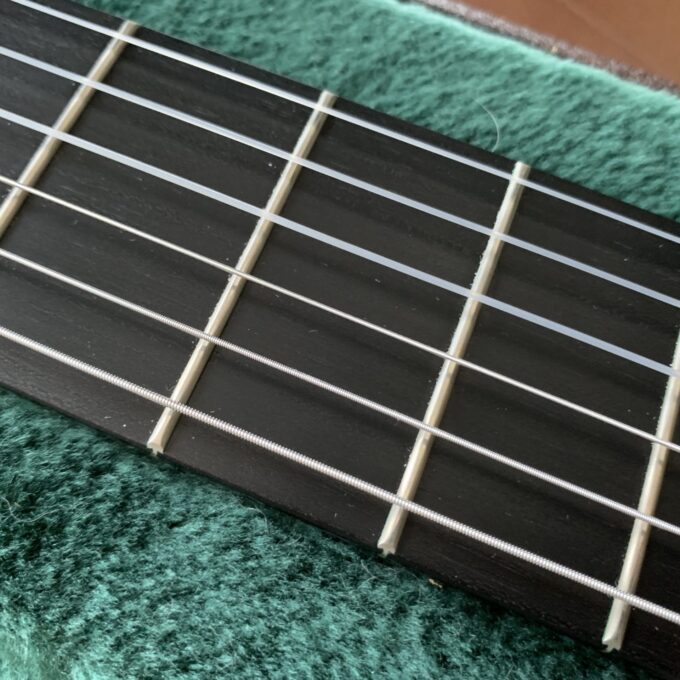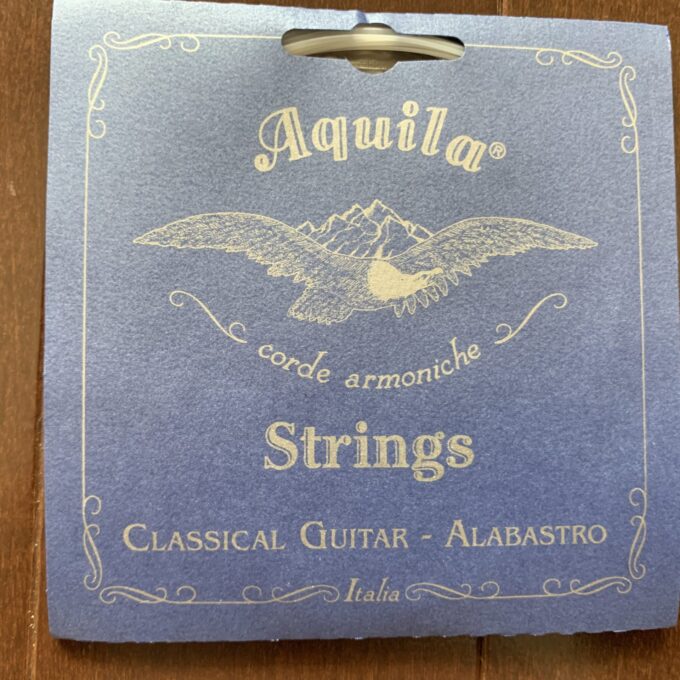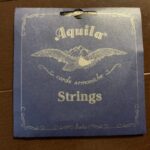This post is also available in:
![]() 日本語 (Japanese)
日本語 (Japanese)
These strings are made by Aquila, a company known for its proactive use of new materials without being bound by conventional ones. This material called Nile Gut (NYLGUT) is an artificial reproduction of gut (sheep gut) strings. It is quite interesting.

The following article summarizes the string reviews/thoughts/information articles on this blog:.
NYLGUT has the same density as gut strings

Aquila claims that NYLGUT is the world’s first artificially created synthetic gut string.
NYLGUT has a density of 1.30 g/cm3, the same as sheep intestines, which is why it produces a sound similar to gut strings.
Another advantage is that sheep gut strings are expensive and the quality is not consistent because they are natural, but NYLGUT is artificial, so it is cheaper and the quality is consistent.
In addition, nylon strings have the disadvantage that the sound changes greatly with humidity (moisture), but NYLGUT is said to be highly stable against moisture.
By the way, it seems that NYLGUT is a material that is easy to break, and if the nut or bridge scratches, it will break. Therefore, it is recommended to check the condition of the nut and bridge before stringing, and sand them if necessary.
This NYLGUT is a material that Aquila has patented.
Alabastro, meaning gypsum
This Nylgut is used for both treble and bass strings in Aquila’s Alabastro. On the SIE’s website, it is called Supernylgut, but on the Aquila website and packaging, it is called Nylgut, so SIE is probably wrong.
The treble strings are wound with NYLGUT monofilament and the bass strings with multifilament core wire wound with silver-plated copper wire.
The strings look like this:

The treble strings are milky white. Most of the normal classical guitar strings are transparent, so it’s rare to find them so white. Bass strings are normal looking.
This is the difference compared to carbon strings:

However, when you compare them, they are completely different, but once you put them on, you won’t feel any discomfort:

This is different from the Maestrale of Dogal and the Rubino of Aquila.
By the way, the bass strings are in a bag, but not sealed. Is it just to prevent the treble strings from rubbing against each other and damaging them?
As usual with Aquila strings, there is no string number on each string. This means that you have to identify them by their thickness. It’s not a problem, but a bit troublesome. Well, it’s better than the price increase instead of the string number.
Three types of tension
I tried the low tension this time, but there are three tensions in Alabastro. Light, Normal and Superior.
The respective tensions are as follows (in kg):
| Light | Normal | Superior | |
| 1st | 8.00 | 8.60 | 9.60 |
| 2nd | 6.90 | 7.40 | 8.10 |
| 3rd | 6.10 | 6.80 | 7.50 |
| 4th | 7.30 | 7.40 | 7.80 |
| 5th | 7.50 | 7.70 | 8.50 |
| 6th | 6.40 | 6.60 | 7.50 |
| Total | 42.20 | 44.49 | 48.99 |
You may be surprised to know that even the light tension has 42.2kg in total, but the tension indication on the Aquila is high, so it didn’t feel this high to the touch. There is no unified standard for tension labeling of classical guitar strings, so each company can do whatever they want…
Clear sound with little incidental noise
When it comes to the sound, I think it has clear sound with little incidental sound.
NYLGUT treble strings do not sound muffled, they sound solid. However, there is no extra sound, and the core is sounding. It’s very interesting because it doesn’t sound like a carbon string and it doesn’t sound like a nylon string. Is this the sound of sheep gut strings?
The bass strings also have the same impression that the core is sounding with less metallic sound. It’s not flashy, but it has a solid low sound. You may feel it’s muddy because of less metallic sound, but it’s not muffled sound.
Perhaps because of this feature, I felt that the sound connection between the bass and treble strings was good.
I thought it would have a very unique sound because it was made by artificially reproducing sheep’s intestines, but surprisingly, it has a normal guitar sound. I thought the sound is like a gut string, and I never get tired of playing it.
Fast sound stabilization
Another thing that impressed me was the speed of stability.
After a little while of attaching, the strings stabilized and I was able to play right away.
Nylon and carbon strings will stretch sluggishly for a while, but I feel that not having this is an advantage.
Recommended for people who are tired of modern sounds
Alabastro is an artificial reproduction of sheep gut strings, so I was expecting something quite unique, but it was just a normal usable guitar string.
I have the impression that classical guitars these days are favored for their flashy sound anyway, but I think this is the opposite of that.
When you are tired of the modern sound, or when you don’t know what the sound of a classical guitar is, this is the string you want to use.




